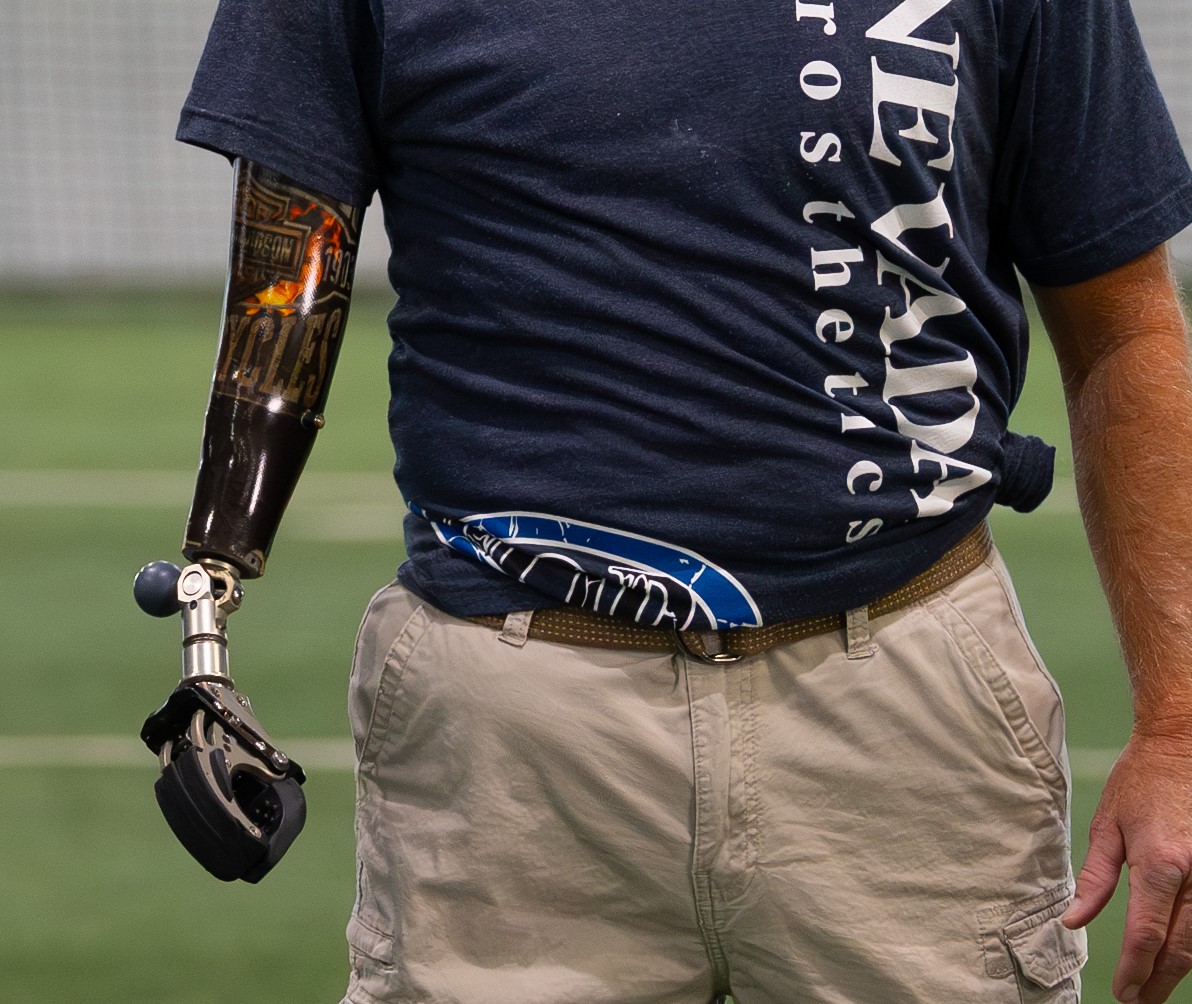
PROSTHETIC ARMS
NOP offers a comprehensive range of prosthetic arms catering to both passive, mechanical, and myoelectric solutions, suitable for individuals with above elbow and below elbow amputations.
Passive prosthetic arms, characterized by their non-moving components, provide:
• Essential functionality, enabling pushing, pulling, supporting, and stabilizing actions. • Custom designs featuring specialized joints for holding and carrying objects.
• Aesthetic considerations, ensuring seamless integration with skin tone.
On the other hand, mechanical and myoelectric prosthetic arms offer a pathway to regaining functionality following limb loss, with myoelectric/bionic options incorporating moving components controlled by sensors and electrodes.
Mechanical prosthetic arms:
• Harness the body’s musculature and motion through cable mechanisms, empowering mechanical elbows and hands in response to the amputation level.
Myoelectric prosthetic arms:
• Employ electrodes to detect muscle movement, facilitating the operation of the elbow and/or hand, tailored to the specific amputation site. Furthermore, we provide hybrid prosthetic solutions that seamlessly blend body-powered and myoelectric features to enhance hand and/or elbow function, depending on the amputation site.
